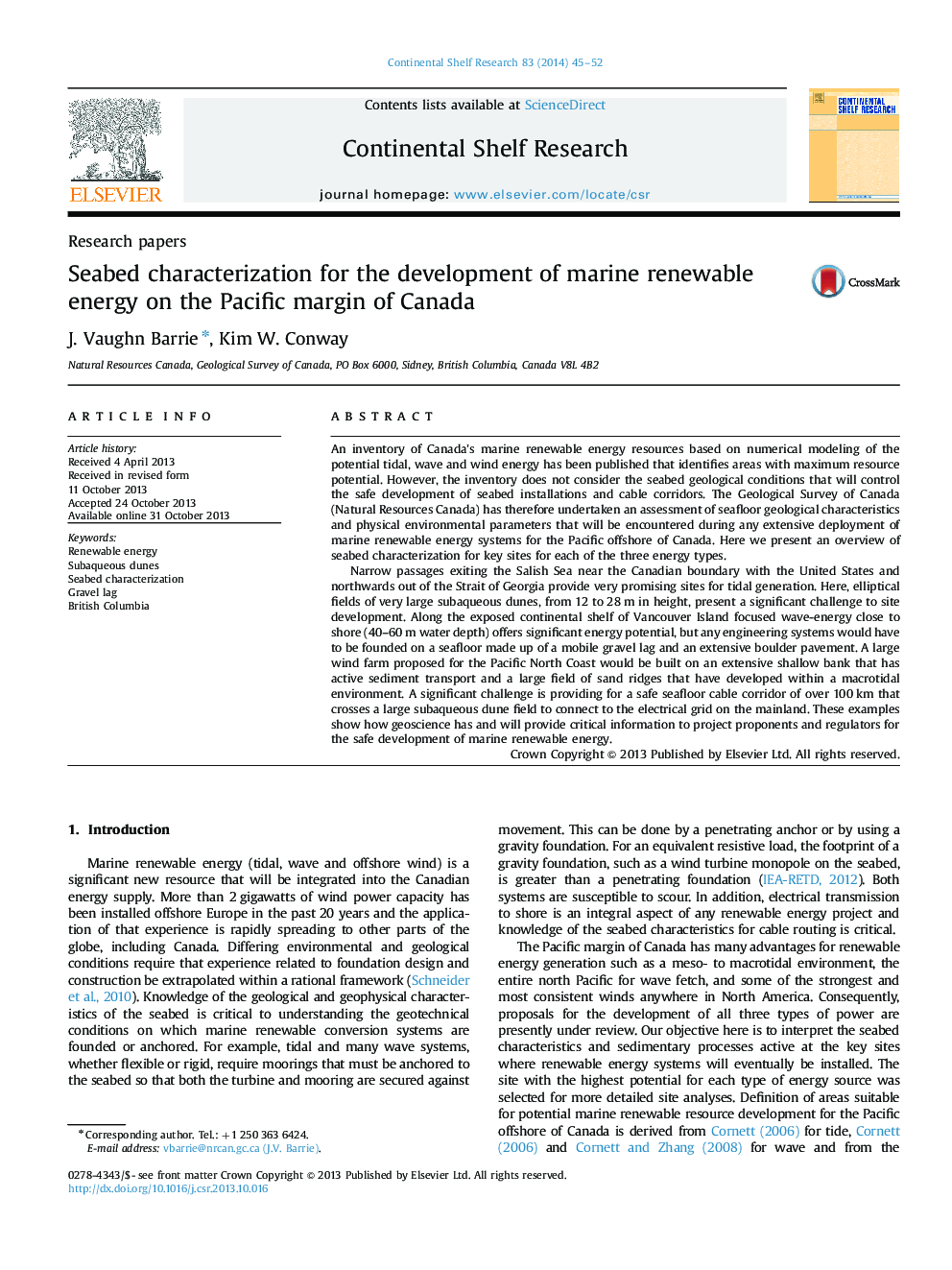| کد مقاله | کد نشریه | سال انتشار | مقاله انگلیسی | نسخه تمام متن |
|---|---|---|---|---|
| 4531832 | 1626129 | 2014 | 8 صفحه PDF | دانلود رایگان |
• Location of potential tide, wave and wind energy sites for the Pacific offshore of Canada.
• Seabed characterization of potential energy locations of the Pacific margin of Canada.
• Relationship between restricted tide channels and the development of elliptical shaped fields of very large subaqueous dunes.
An inventory of Canada's marine renewable energy resources based on numerical modeling of the potential tidal, wave and wind energy has been published that identifies areas with maximum resource potential. However, the inventory does not consider the seabed geological conditions that will control the safe development of seabed installations and cable corridors. The Geological Survey of Canada (Natural Resources Canada) has therefore undertaken an assessment of seafloor geological characteristics and physical environmental parameters that will be encountered during any extensive deployment of marine renewable energy systems for the Pacific offshore of Canada. Here we present an overview of seabed characterization for key sites for each of the three energy types.Narrow passages exiting the Salish Sea near the Canadian boundary with the United States and northwards out of the Strait of Georgia provide very promising sites for tidal generation. Here, elliptical fields of very large subaqueous dunes, from 12 to 28 m in height, present a significant challenge to site development. Along the exposed continental shelf of Vancouver Island focused wave-energy close to shore (40–60 m water depth) offers significant energy potential, but any engineering systems would have to be founded on a seafloor made up of a mobile gravel lag and an extensive boulder pavement. A large wind farm proposed for the Pacific North Coast would be built on an extensive shallow bank that has active sediment transport and a large field of sand ridges that have developed within a macrotidal environment. A significant challenge is providing for a safe seafloor cable corridor of over 100 km that crosses a large subaqueous dune field to connect to the electrical grid on the mainland. These examples show how geoscience has and will provide critical information to project proponents and regulators for the safe development of marine renewable energy.
Journal: Continental Shelf Research - Volume 83, 15 July 2014, Pages 45–52
